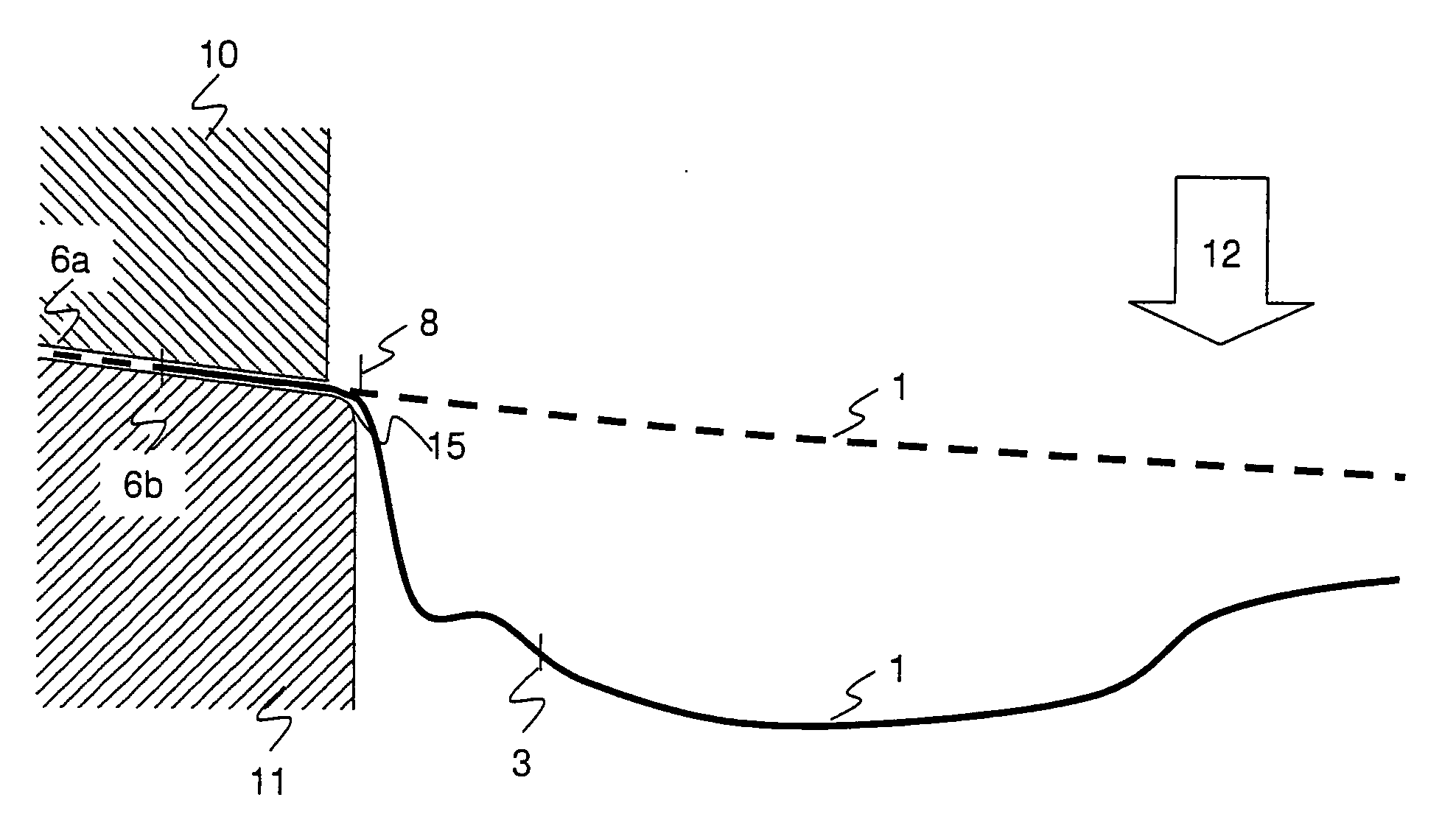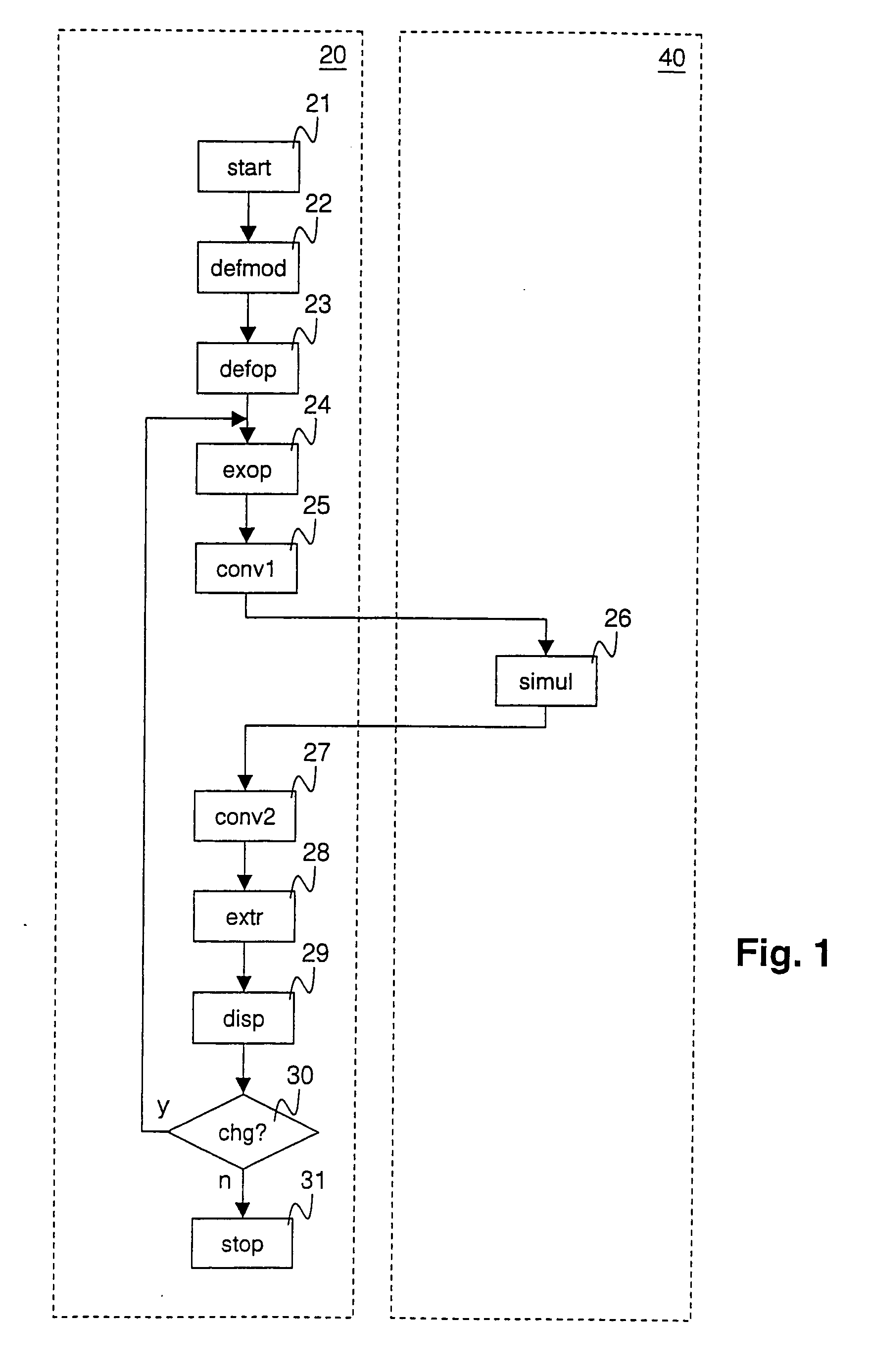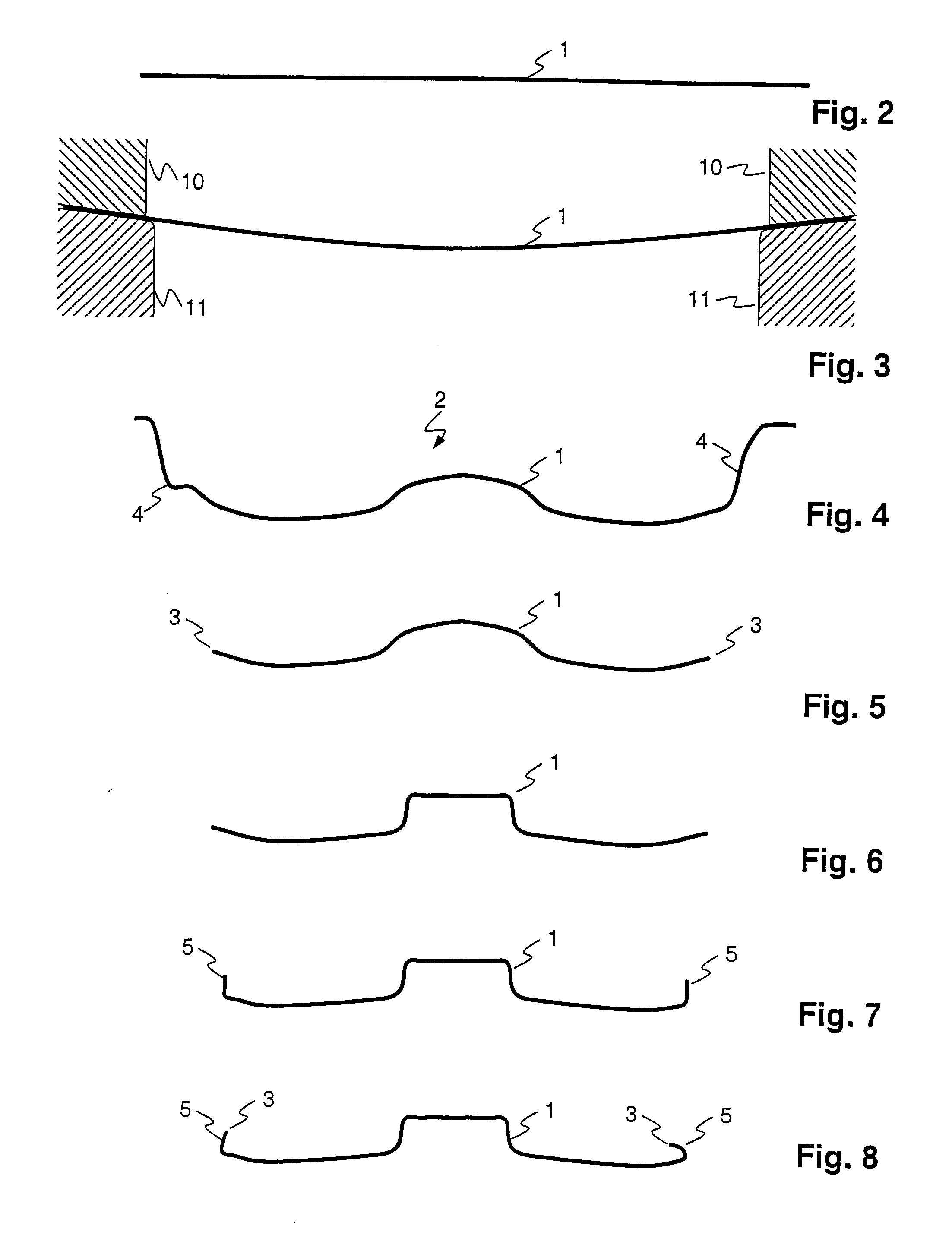Determination of a model of a geometry of a metal sheet forming stage
- Summary
- Abstract
- Description
- Claims
- Application Information
AI Technical Summary
Benefits of technology
Problems solved by technology
Method used
Image
Examples
Embodiment Construction
[0090]FIG. 1 shows a procedural course of a method according to the invention. The method runs in a CAD-system 20 for the design of a geometry of forming stages. The method uses functions of a physical simulation system 40 which are either integrated into the CAD-system 20 or are made available via a program interface by way of the physical simulation system 40. A step for model production of a geometry object 22 is carried out after the start 21 of the method within the CAD-system 20. Thereby, the model, for example in the working memory region of a computer, is produced by way of user inputs or by way of stored model data, so that it may be processed by the CAD-system 20. In a step for the definition of an operator 23, the operator which sets the geometry objects in a relationship to one another, is manually defined or is read from a stored model description. The operator may, for example, be written as f, wherein
G2=f(G1,P),
wherein G1 indicates a first, and G2 a second geometry...
PUM
 Login to View More
Login to View More Abstract
Description
Claims
Application Information
 Login to View More
Login to View More - R&D
- Intellectual Property
- Life Sciences
- Materials
- Tech Scout
- Unparalleled Data Quality
- Higher Quality Content
- 60% Fewer Hallucinations
Browse by: Latest US Patents, China's latest patents, Technical Efficacy Thesaurus, Application Domain, Technology Topic, Popular Technical Reports.
© 2025 PatSnap. All rights reserved.Legal|Privacy policy|Modern Slavery Act Transparency Statement|Sitemap|About US| Contact US: help@patsnap.com



